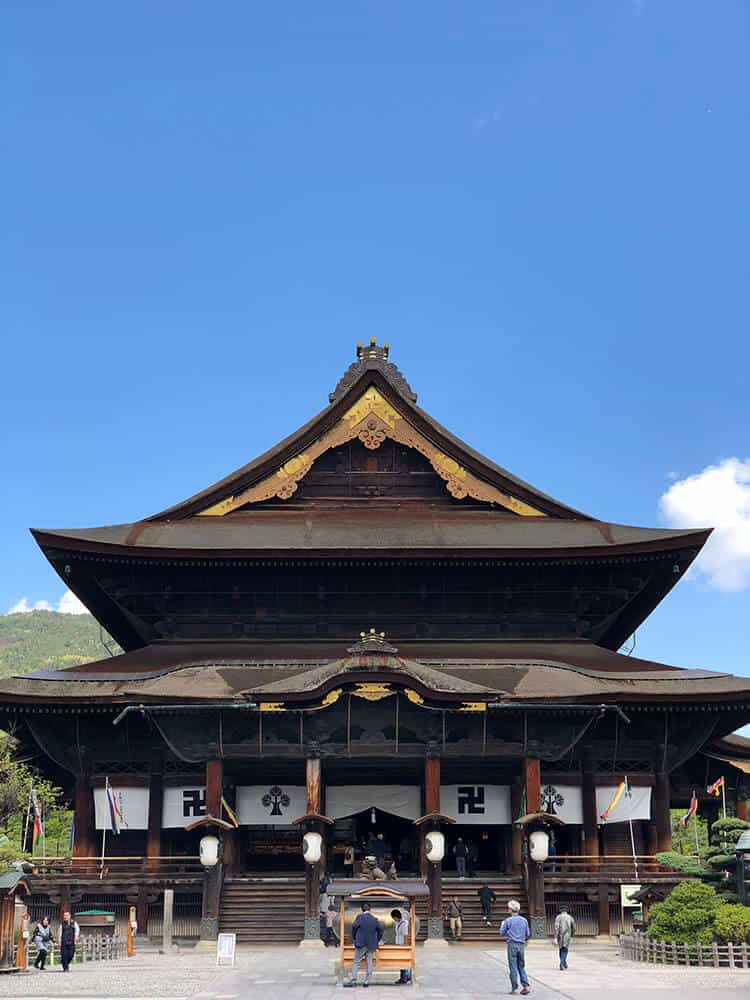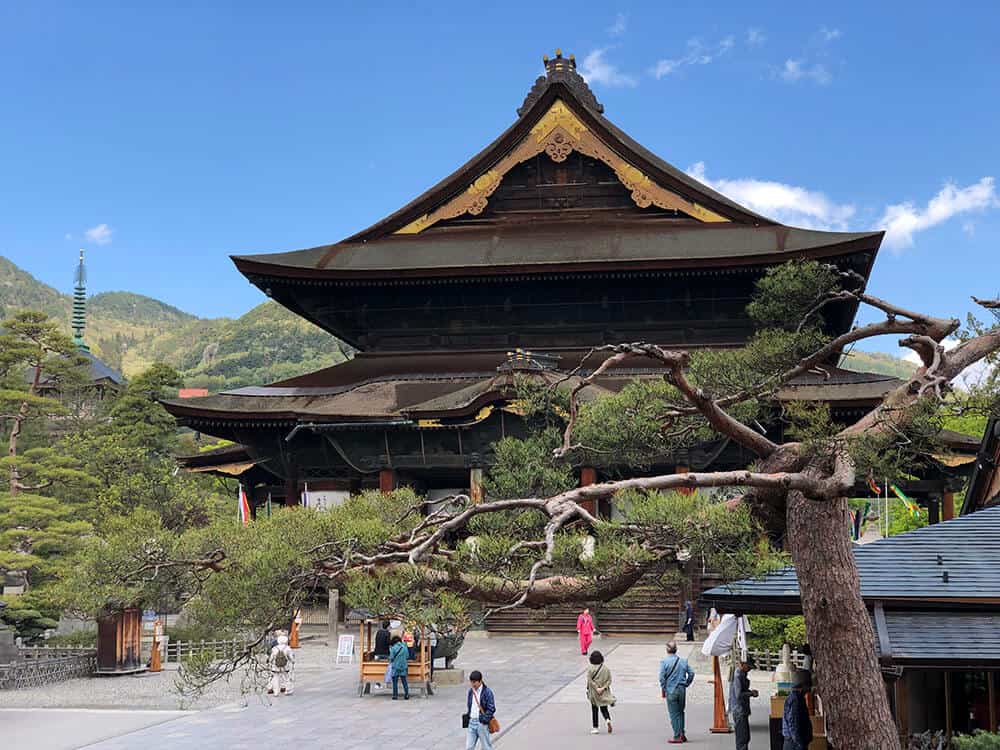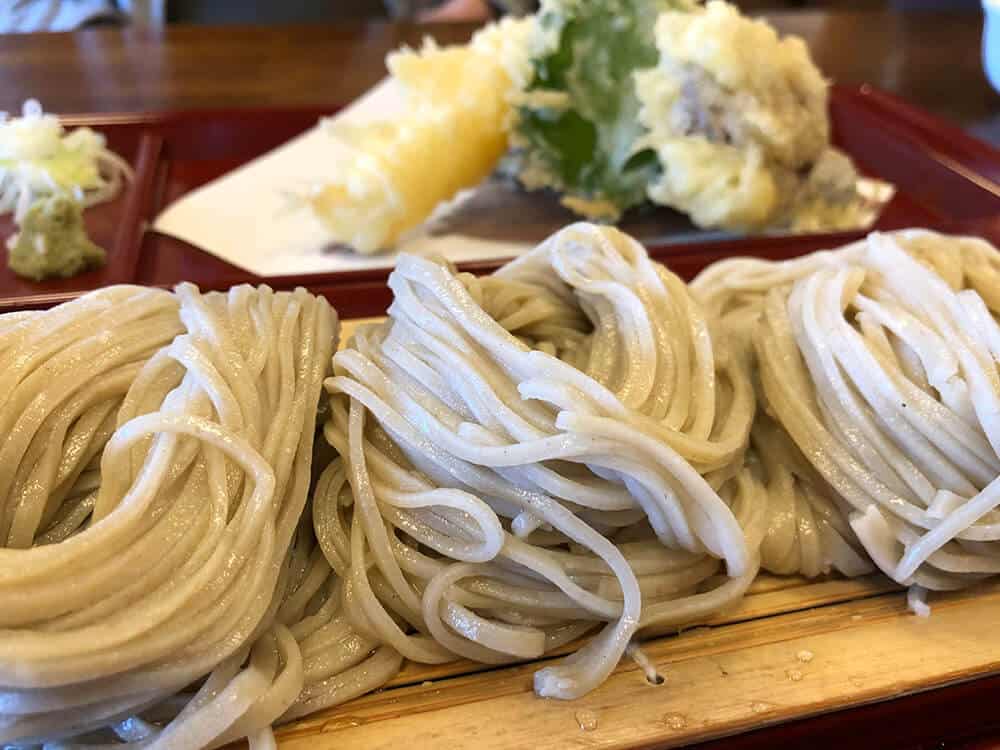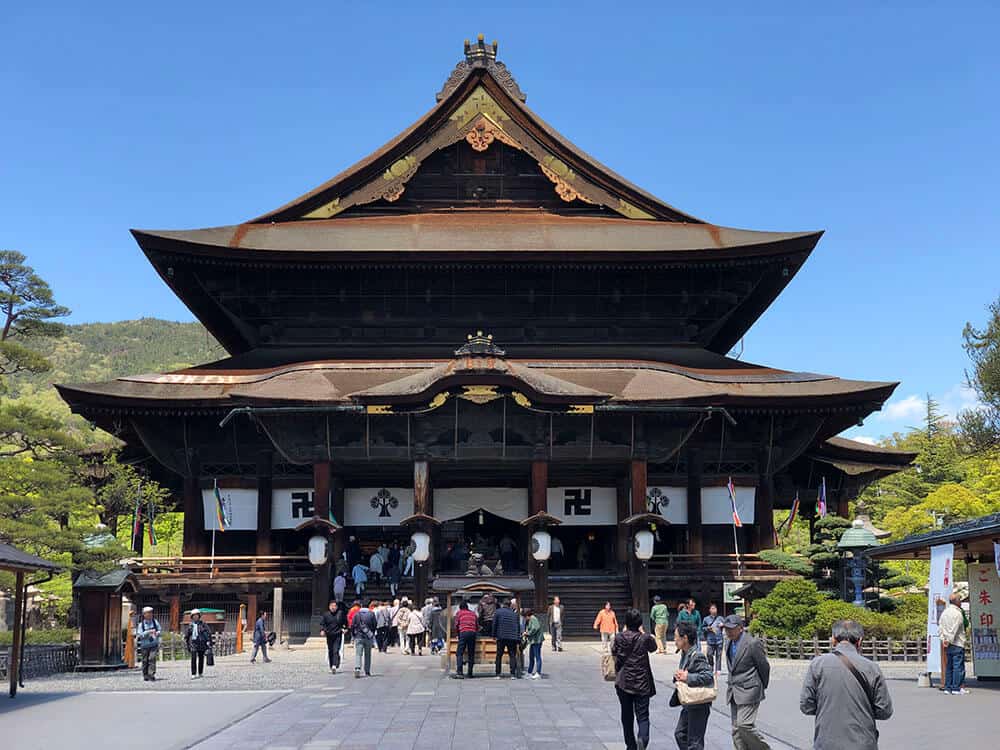About Zenkoji Temple
Zenkoji Temple is one of the most important temples in Japan and contains 1,400 years of history with in its compound. The area is considered a national treasure and is an important place of history, culture and architecture. Founded in the 7thcentury the temple contains the first ever Buddhist statue to be brought to Japan when the religion was first introduced to the country. The statue of Amitabha was buried in a moat by an anti-Buddhism group in the 6thcentury and later recovered and enshrined in Zenkoji Temple. Today a replica statue is on display to the public and the real one is shown every 6 years. The next display will be held in 2021.

The Zenkoji temple area is large and there are two impressive large gates that lead up to the main temple area. The temple grounds include the main temple and several other smaller buildings and a museum. The main temple is incredibly impressive. Several things you should take care to notice includes the purification smoke outside the temple. Upon entering the temple, it is customary to offer a small money offering to the gods and Buddha. Money is thrown in the collection box and a prayer is made.
In the entrance area is the Obinzuru statue. Obinzuru was one of the disciples of Buddha. If you rub the area of his body that corresponds to an area that troubles you it is said that you will be cured. The statue is now worn smooth from having been rubbed by many thousands of temple visitors.

For 500yen you can enter further in the main area of Zenkoji temple and can take a closer look at the main altar. A particularly interesting area is the pitch-black corridor that runs under the temple. It is said that if you can touch the key which is attached to the wall you will be granted access to paradise.
To learn more visit the Nagano City website here.
Access
Take the train to Nagano train station, From the station you can take a bus directly to the temple area or you can walk there. The walk takes about 25min from the station, but you will pass all the interesting shops that line the road leading the temple as well as the two large temple gates. For those with a car there are car parks directly behind the temple. They are paid car parks but are not expensive.
Food
There are many restaurants just outside the temple. The traditional soba noodle dishes are highly recommended.


